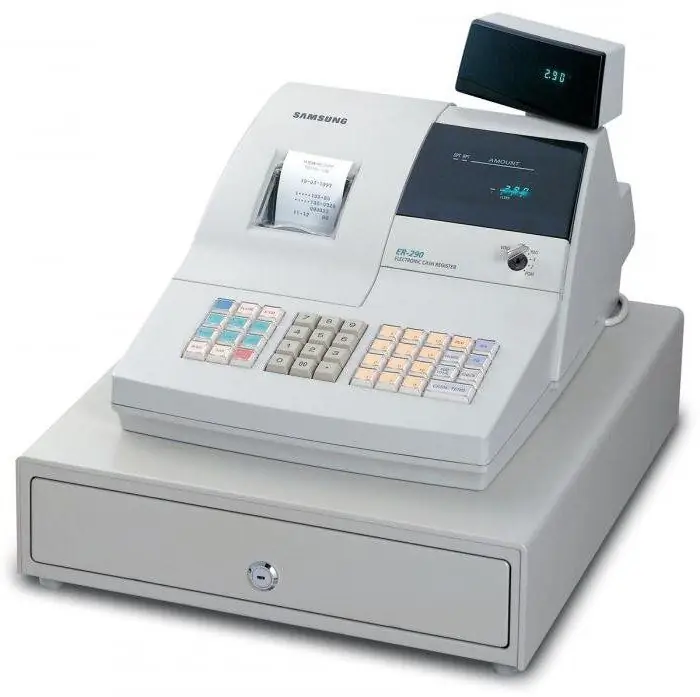2026 Author: Howard Calhoun | [email protected]. Last modified: 2025-01-24 13:10:27
In Russia there are many opportunities for the activities of various commercial organizations. And one of the most interesting is the production type cooperative. It is fundamentally different from other similar structures and opens up unique opportunities for participants.
Key concepts
For a full understanding of the topic, you need to consider the concept and features of a production cooperative (aka artel). It would be logical to start by describing the features of this organization.

So, what should be understood as a production-type cooperative? In fact, we are talking about one of the possible organizational and legal forms of a commercial legal entity. This form has a full legal basis, which can be found in Art. 50 of the Civil Code of the Russian Federation.
If you pay attention to Art. 65, you can find out that such organizations also apply to corporate legal entities. This fact is due to two reasons:
- the founders of such an organization have the right to participate inregulation of internal processes;
- within the framework of the artel, the supreme governing body of the structure can be organized.
Considering the signs of a production cooperative, it should be understood that it, like other similar organizations (societies, partnerships), is based on the principle of membership and commercial activity. But at the same time, it has a unique feature: for its formation, joint labor participation in key activities is used to a greater extent, and not the property of the founders, although the latter also takes place.
Key Features
If you study a number of features that a PC has, it will be possible to conclude that such an organization is an association not only of persons, but also of capital. These resources are used simultaneously, but the participation of members of the artel is more emphasized. This fact is confirmed by the key features of a production cooperative:
- regardless of the size of the share, participants have equal rights;
- membership is used as the basic principle of organizing the structure;
- joint production and economic activities as such are allowed;
- regulation of internal processes is based on self-management and election;
- the structure itself is formed only in case of a voluntary initiative of its participants;
- The organization's methods of carrying out activities imply self-activity and mutual assistance.
Thus, the signs of a production cooperative allow us to assert that such a structurecan be formed only after the voluntary agreement of future participants on the creation of a free cooperative organization.
Nuances of the union format
The combination of the above features of the considered commercial organization indicates a constant combination of labor participation of members of the structure with the use of capital.

This information allows you to better understand the essence of the processes within such an organization.
Since one of the key elements is the capital, consisting of individual shares provided by the participants, the activities of the production cooperative will inevitably include tasks related to making a profit. But at the same time, one should not forget about the various individuals, the combination of which forms the organization itself. Each of the participants has certain interests (social, economic, etc.), which will inevitably have to be taken into account in the process of defining and fulfilling tasks.
As a result, the following conclusion becomes obvious: the process of making a profit and distributing the funds received is always governed by the goals of the participants. Actually, the signs of a production cooperative include this feature of such a commercial organization.
Legal Status
If we analyze the question of the status of such organizations, then it is worth noting the uniqueness of this form of doing business. In more detail, the organization of a cooperative makes it possible to connect many possibilities,related to the realization of freedoms, interests and rights of citizens acting as participants. It is this feature that such commercial organizations fundamentally differ from other forms of entrepreneurial activity.
The above range of possibilities allows a structure member to legally exercise the following rights:
- using your resources to run your business;
- ownership, disposal, use of property jointly with other persons, and not alone;

- free choice of profession and activity in general, as well as full-fledged labor activity within the chosen direction;
- free use of one's own abilities for entrepreneurial activities.
All these rights are defined by the constitution of the Russian Federation and can be fully implemented within the framework of a production cooperative, which is formed in full accordance with the requirements of the law on state registration of legal entities and individual entrepreneurs.
Formation of a cooperative
Based on the above information, we can conclude that such a form of entrepreneurial activity as a production cooperative is definitely relevant. Now we need to decide how it can be organized.
First of all, you need to start by registering the cooperative itself. This process is inevitable and requires a lot of attention. A complete understanding of this issue will help to obtain the law on state registrationlegal entities and individual entrepreneurs.

Initially, a certain number of legal entities that are potential participants must make a voluntary decision regarding the formation of such a commercial organization. After that, it is worth starting to draw up a charter, without which the artel cannot be registered. This document must be approved at the general meeting of the founders.
It is important to take care of the name as well. It will be necessary to add the words "artel" or "production cooperative" to it.
The following information must be displayed in the decision to establish a cooperative, which the members of the organization submit to the registration authority:
- information regarding the establishment of a cooperative and the approval of its charter;
- data on the size, procedure, methods and terms of formation of the property of the organization;
- describe the principles for electing the key bodies of the structure and provide voting results on major issues.
For a detailed display of information of this kind, a protocol is drawn up. The final stage will be the submission to the local registration authority of the minutes of the meeting of founders, an application drawn up in the prescribed form, as well as documentary evidence of payment of the state fee and the charter itself.
Differences from state and municipal forms
To begin with, it is worth recalling how a production cooperative differs from structures such as municipal enterprises and not only.
First of all, it makes sense to recall the personal labor participation of members of the organization in the activities of the cooperative. Next, you need to pay attention to equality in the management of the structure. Another feature that distinguishes the PC from other organizations is the division of property into shares belonging to the participants.

In addition, there is also a subsidiary liability of members for the debts of the cooperative. It is also important to know that, according to the current legislation, state authorities and local self-government bodies must promote the development of the activities of commercial organizations of this type.
Assistance can take the form of benefits, including tax benefits, in the provision of services and the production of goods. It is also possible to provide the structure with land plots and non-residential property, which the cooperative, if necessary, can redeem. Moreover, government agencies can provide artels with access to the information necessary for their full-fledged activities.
If we consider municipal enterprises, then, first of all, it is worth noting that they are created mainly in a unitary form. The main shareholder in enterprises of this type is the state, and, as a result, they are on its balance sheet. However, it is worth paying attention to the fact that the ownership of such organizations belongs to local municipalities, namely urban or rural settlements.
Property issue
Property of production cooperativesis divided into shares of the organization's members, and they are proportional to the contribution of each of them.
As for the profit, it is distributed among the members of the structure according to their participation in the activities of the artel. If the liquidation process of the organization is launched, then each of the members will be able to take their share, which is calculated as a percentage.
It makes sense to pay attention also to the sources of formation of the organization's property:
- income received in the process of carrying out the activities of the artel;
- property contributions of cooperative members;
- any other sources of income that are not prohibited by applicable law.
To complete the picture, you need to pay attention to one more fact: the property formed by the shares of the participants is the property of the cooperative, and not the shared property of the members of the artel.
Possible activities
The current legislation determines what activities are available and legal for the production cooperative. These are the following directions:
- construction;
- trading;
- organization of design and research work;
- various types of services, including household ones;
- production, marketing, and processing of agricultural, industrial and other products;

- mining and natural resources as such;
- provision of marketing, legal, medical and othertypes of services that are not prohibited by law;
- collection and subsequent processing of secondary raw materials.
As you can see, the members of the artel have more than enough opportunities for active work.
Rights
The possibilities and permissible facets of the cooperative's activities were described above. But, if you pay attention to the rights of a production cooperative, then it can be argued that the key is the ability to own property and carry out economic activities. Without this, the existence and development of the organization would be extremely problematic.
It makes sense to pay attention to the rights of its members. So, it is worth recalling that each participant is given the opportunity to vote at the time of the decision. And this fact does not depend on the size of the share.

Also, members of the organization can actively participate in the activities of the artel, receive their share of the profits, elect others and nominate themselves, request the necessary information from officials.
Possible forms of structure
Don't expect much variety here. The main difference between such organizations will be the features of their activities. If we take into account the permissible forms of a production cooperative, then it should be noted that such organizations can unite and form associations.
Also, if necessary, the artel can be reorganized. The legislation allows two types of transformed structures of this type:
- economic society(LLC);
- business partnership (limited or full).
To initiate such a process, a positive decision of all members of the cooperative will be required.
Results
The fact that Russian legislation allows the formation of a cooperative with the union of both the labor participation of its members and the capital of the latter is unambiguously positive. But this form of commercial organization, unfortunately, is still not widespread enough due to the high subsidiary liability of the participants.
Recommended:
Legal status of an individual entrepreneur. Federal Law No. 129-FZ of 08.08.2001 "On State Registration of Legal Entities and Individual Entrepreneurs"

Citizens who have decided to develop their own business should know their rights and obligations to the state. For this reason, it is necessary to pay attention to the status of an individual entrepreneur. This information will help to more clearly understand what an individual entrepreneur can count on and what duties are assigned to him by law
State duty for registration of ownership of real estate for individuals and legal entities

On the territory of the Russian Federation, all real estate transactions are recorded. In order to be able to dispose of property, it is necessary to register the rights and make changes to the unified register. Depending on the current situation, it is necessary to comply with certain regulations in order to collect the appropriate package of documents when provided to authorized organizations.
A production cooperative is The Federal Law on production cooperatives. Legal entity - cooperative

Business is not only a means of personal enrichment, but also a way to significantly support financially that area or other entity in which the segment of small or medium-sized businesses is significantly developed. Knowing this, most of the self-government bodies actively support (sometimes not even on paper) the initiatives of citizens
How to register in the taxpayer's personal account: legal entities, individuals and individual entrepreneurs

Personal account is a convenient service of the Federal Tax Service. It opens up a number of convenient features for citizens. Registration in it does not require special skills
Do I need a cash register for individual entrepreneurs with the simplified tax system? How to register and use a cash register for individual entrepreneurs under the simplified tax

The article describes the options for processing funds without the participation of cash registers (CCP)

